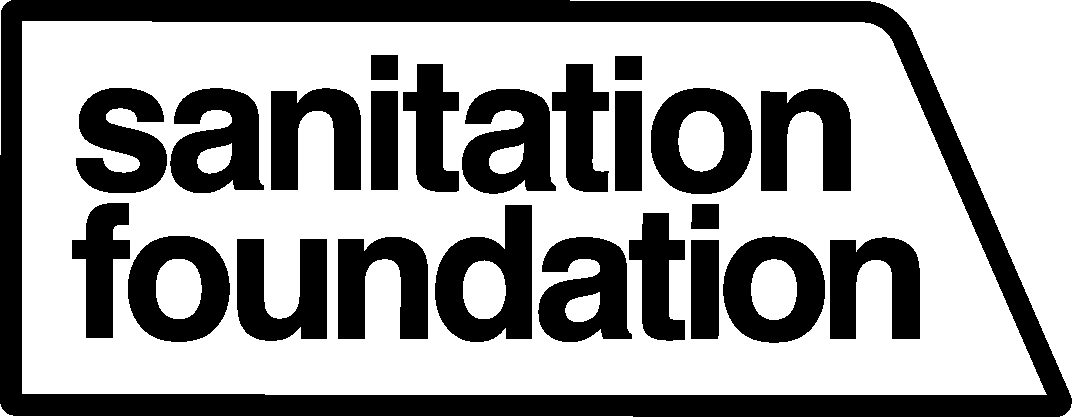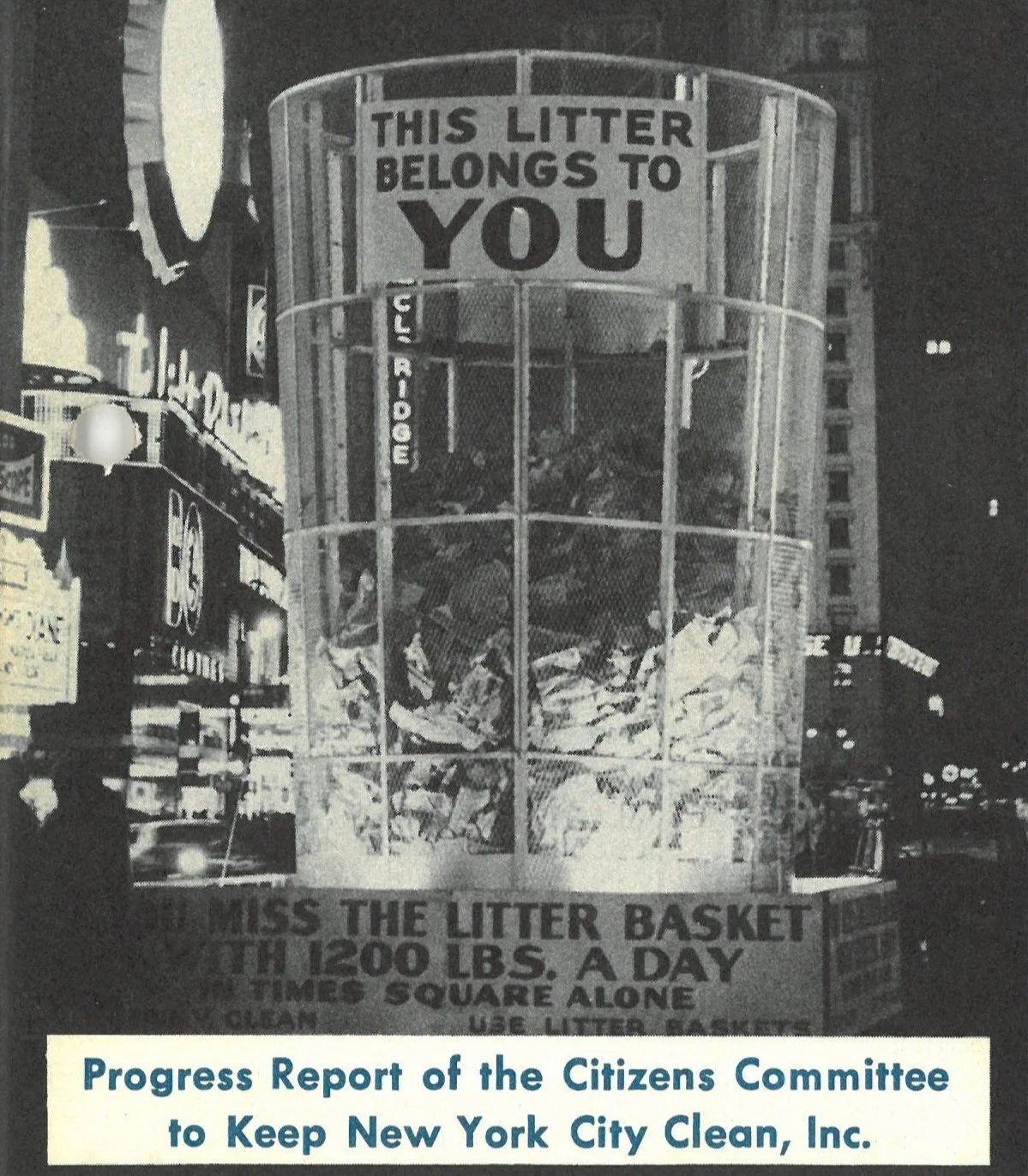The Citizens Committee to Keep New York City Clean
by Chris Bendall
The Sanitation Foundation was established in 2016 to foster public and private partnerships with the NYC Department of Sanitation (DSNY). Did you know that over half a century before that, there was another nonprofit established to engage the public in DSNY’s work?
Public engagement has long been employed by the NYC Department of Sanitation (DSNY) as a means of keeping the city’s sidewalks and streets clean. The Sanitation Foundation was established in 2016 to further the Department’s aims through educational programs, community cleanups, private partnerships, and large-scale public events. The Foundation’s efforts are built on the tradition of meeting the public at their place of need, ensuring resources and efforts are used to directly improve their communities. While the Sanitation Foundation is the official organization of DSNY, there are many metropolitan and community associations who work independently and in tandem with the Department to help make and keep New York City clean. Before the Sanitation Foundation and many of today’s local groups were formed, the Citizens Committee to Keep New York City Clean served as a prominent nonprofit organization charged with educating New Yorkers and leading community clean up initiatives.
Cover of the 1956 Progress Report of the Citizens Committee to Keep New York City Clean, Inc. “In May 1955, at the urgent request of Mayor Wagner, Keith McHugh, the President of the New York Telephone Company, became chairman of the [committee].”¹
A City in Need of a Committee
The Citizens Committee to Keep New York City Clean, Inc. (CCKNYCC) was founded in 1955, at the behest of Mayor Wagner. It was established as a public engagement and educational organization to bolster the Department of Sanitation’s (DSNY) efforts to keep litter off sidewalks, out of the streets, and in waste baskets. While DSNY was busy with their regular duties of collecting garbage, flushing streets, and sweeping sidewalks, they were unable to keep up with the personal litter dropped by everyday New Yorkers. Initially, the Citizens Committee held public meetings, recruited volunteers, and conducted block-by-block surveys of quality of the streets as well as the litter concerns of residents. Upon completion of their initial inquiry, the Committee, in partnership with the advertising agency Young & Rubicam, began to market cleanliness to the general public through a campaign of newspaper and magazine ads, radio and television spots, and public flyers and community activism (particularly in schools).² Billing street cleanliness as the personal responsibility of all New Yorkers, the campaign brandished the slogan “A cleaner New York is up to you” and distributed information on proper litter disposal and methods of community accountability.
A Citizens Committee ad featuring Charlie Dooley properly disposing of his litter into a waste basket.
Throughout its fifteen year run the Committee continuously revitalized its advertising campaigns with new slogans, print advertisements, and even cartoon mascots. Combining the “personal responsibility” approach with the intensifying Cold War rhetoric, advertisements reminded readers it was their patriotic duty to properly dispose of their everyday litter. The affable Brooklynite spokesman Charlie Dooley (played by John Kane) may have irritated certain highbrow New Yorkers but his colloquial dialect popularized his efforts across the city.³ Unfortunately for Dooley, Young & Rubicam parted with CCKNYCC in 1959 and J. Walter Thompson advertising agency took over—ending his short but impactful career.⁴
A critique of the Dooley campaign can be found on pages one and 10 in the July 16, 1959 edition of “The Villager” newspaper, viewable via this link from “New York Historic Newspapers” (a project organized by the Northern New York Library Network).
Public Engagement through Entertainment and Education
In 1965, the Committee debuted the cartoon character “Phil D. Basket” on flyers and in subway and bus ads, as well as via radio programs and animated television commercials. Phil was created with the help of Batten, Barton, Durstine, & Osborn (the Committee’s advertising partner after J. Walter Thompson) and was designed to attract New Yorkers’ attention to their new slogan, “Just a drop in the basket helps keep New York clean.” Phil D. Basket showcased the problem of careless littering through comical illustrations which depicted singular insects, grains of sand, and drops of water as matters of no concern, but when intensified they resulted in plagues, deserts, and floods.⁵
During the 1965-66 campaign, the Citizens Committee to Keep New York City Clean began distributing teaching materials to city schools and community organizations. Included in these materials were copies of Clean City Digest—a small, 20 page booklet with information on city laws, DSNY services, and community efforts to clean up neighborhoods; several short films describing the responsibilities of citizens to keep the city litter free; and suggestions for group projects to be undertaken by students and community organizations.⁶ The thinking behind this approach was to encourage clean habits from a young age and to build inroads to communities through their local organizations. By encouraging active participation from the city’s children, the CCKNYCC hoped to not only reach a broader audience of potential litters/community cleaners but also utilize the younger generation as a means of encouraging participation from their parents and guardians.
Community Teaching Aids from the Citizens Committee
“Community Action” was a radio program which served the greater New York area in the 1960s. It was advertised as “the weekly health and welfare report produced by the Community Council of Great New York, the Planning and Coordinating Group for Health and Welfare Services” and served as a platform to address local social and political interest issues. The September 22, 1967 broadcast focused on the collaboration between the Department of Sanitation and the Citizens Committee to Keep New York City Clean.
Gone but Not Forgotten
The Citizens Committee was eventually disbanded in May of 1970; however, Mayor Lindsay initiated the Council on the Environment as a replacement organization.⁷ Having just won reelection by running a third party ticket in 1969, Lindsay faced significant criticism from several city service sectors and residents concerned about neighborhood litter. In an effort to revitalize the “clean city” movement, Mayor Lindsay adopted a more broad spectrum approach to cleanliness, encouraging the Council on the Environment to address the impact of litter on the city’s natural spaces as well as community appearance. Additional city-organized and community-based volunteer organizations have come and gone since the Citizens Committee to Keep New York City Clean. You can visit jaime ding’s website “Trash in Sight” for additional information on some of these groups.
Following in the footsteps of this work to keep New York City clean, healthy, and safe, the Sanitation Foundation works to amplify the reach of DSNY by empowering the public to contribute to this work as well, through our corporate and community cleanup programs. The Foundation is distinct from previous efforts through its commitments to thought leadership (exemplified by Zero Waste Academy, ReFashion Week, and Food Waste Fair programs) as well as its sharing of the history and culture of DSNY and its role in the sustainability – in the past, present, and future of NYC (see the Floyd Bennett Field exhibit, DSNY Remembers, and the Museum Strategic Plan). By empowering the public to understand the context of waste management in NYC, the Foundation creates lasting change for communities within the city and beyond.
References
The World’s Biggest House Cleaning Job: Progress Report of the Citizens Committee to Keep New York City Clean, Inc., 1956, DSNY Archival Collection, New York City Department of Sanitation, New York City, NY.
The World’s Biggest House Cleaning Job: Progress Report of the Citizens Committee to Keep New York City Clean, Inc., 1956, DSNY Archival Collection, New York City Department of Sanitation, New York City, NY.
Murray Schumach, “Parade to Encourage Tidiness Results in Traffic Tangle Here,” New York Times, March 4, 1959.
Edmond J. Bartnett, “City Ready to Buy 14,587 Litter Cans,” New York Times, October 6, 1959.
1964-1965 Annual Report of the Citizens Committee to Keep New York City Clean, Inc., 1965, DSNY Archival Collection, New York City Department of Sanitation, New York City, NY.
1965-1966 Annual Report of the Citizens Committee to Keep New York City Clean, Inc., 1966, DSNY Archival Collection, New York City Department of Sanitation, New York City, NY.
John C. Delvin, “Flower Tubs Along Broadway Turning into Midtown Eyesore,” New York Times, August 4, 1970.






